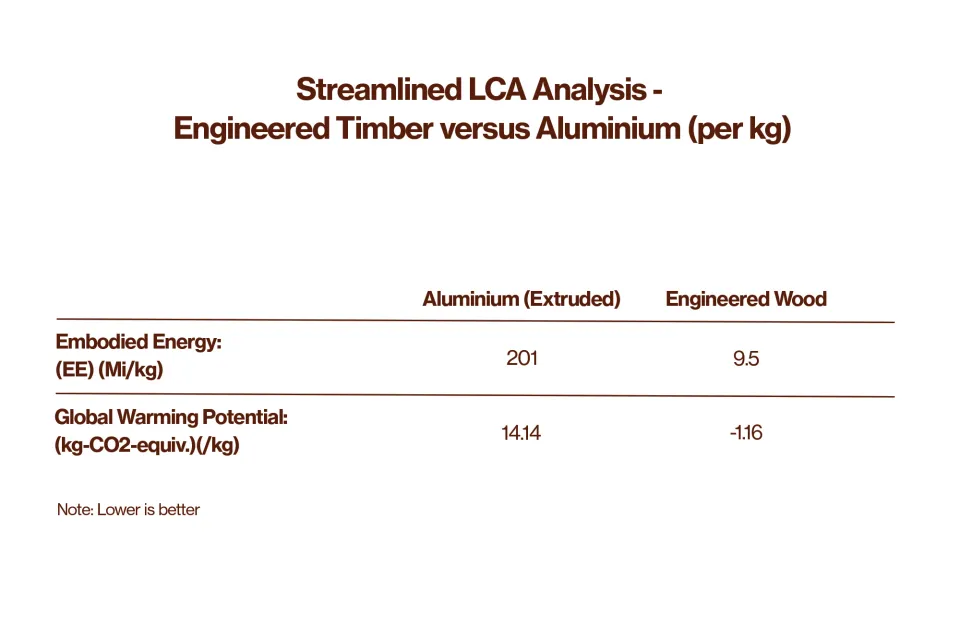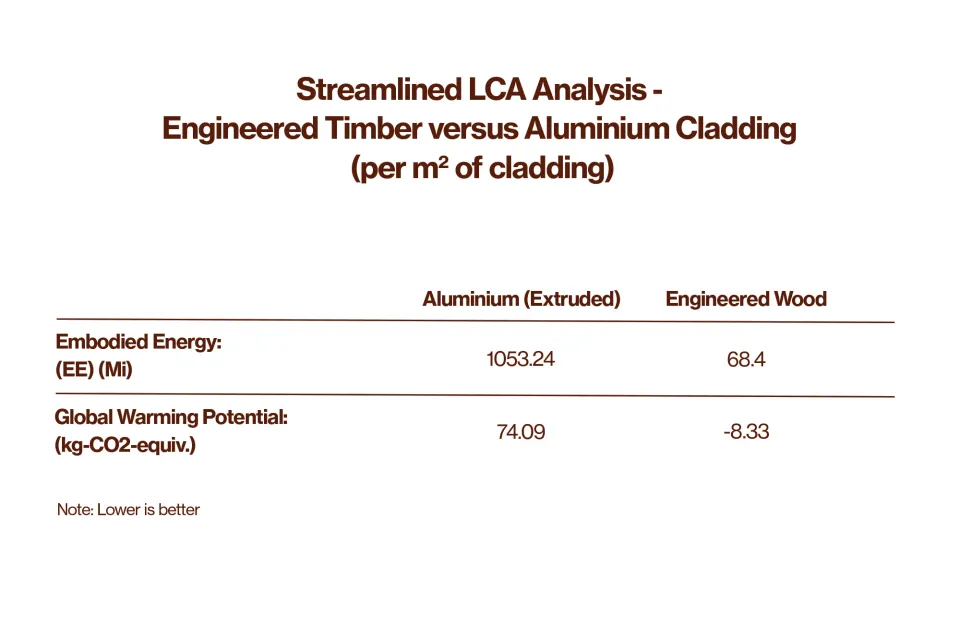-
About
-
Products
- By Timber Product
- Cladding
- Decking
- Joinery
- Screening
- Panelling
- View all
- By Application
- Exterior Cladding / Siding
- Exterior Rain Screen
- Exterior Roofing
- Interior Walls & Ceilings
- Soffits
- Screening, Fins & Battens
- Windows, Doors & Joinery
- Posts & Beams
- Accessories + Samples
- Coatings
- Fixings
- Samples
-
Shop
- Samples
- Timber Samples
- Architectural Sample Box
- View all
- Accessories
- Coatings
- Fixings
- View all
-
Resources
- By Resource Type
- Technical Data Sheets
- Guides & Manuals
- Technical Articles
- Profile Drawings
- View all
- How To
- How To Specify
- How To Install
- How To Maintain
- Projects
- Contact
Is Aluminium Cladding More Sustainable than Wood Cladding?
PhD student Ged Finch talks to us about the sustainability credentials of aluminium vs wood cladding.
As we work towards the target of net-zero carbon emissions by 2050 we need to question the environmental costs of every building material that we specify.
One of the areas that is often overlooked when it comes to carbon emissions is cladding products.
Depending on the building’s structure, the material selected and size of the building, cladding materials can be one of the largest contributors to embodied carbon emissions in modern buildings.
A simple way to understand the environmental impacts of a given cladding material is to look at the embodied energy and global warming potential of each product.
If we compare, for example, timber weatherboards with extruded aluminium weatherboards there is a significant difference in upfront environmental costs:
Source: Alcorn, A. 2010. Global Sustainability and the New Zealand House. Doctoral Dissertation, Victoria University of Wellington (pg. 180 and 245)
The data on its own is telling.
There is a 2000% increase in the quantity of energy required to manufacture aluminium weatherboards versus timber boards.
Likewise, there is a 13x (or 1300%) increase in CO2 emissions per unit of Aluminium manufactured versus. timber.
To make this information more relevant to buildings you can convert these weight emissions into a per square metre area emissions measure:
Based on this analysis the high environmental costs of Aluminium cladding products are immediately clear. Per m2 of cladding Aluminium produces 74kg of carbon dioxide versus timber which sequesters 8.3kg.
This is of course not the full story. Being a ‘technical nutrient’ Aluminium can be entirely recycled in a high-value manner indefinitely and doing so requires significantly less energy. It is therefore important to look at the lifecycle costs and potential of both products.
It is frequently reported that recycling Aluminium uses '5% of the energy required to manufacture aluminum from ore'. With that in mind, and by using the previous embodied energy figures, recycling Aluminium uses approximately 10 Mj of energy per kg.
To quantify the benefits of this recycling we must identity the point at which reusing a product with higher embodied energy becomes better than the embodied energy costs of using a new product each time.
If we do this for timber weatherboards versus Aluminium cladding materials and assume a lifespan of 25-40 years it would take (roughly) 750 years (that’s up to 30 use cycles) for you to be 'embodied energy neutral' when using recycled Aluminium products vs. using new timber products every time.
Given that many timber products can be refinished and reused, the recyclability potential of Aluminium does not out-weigh its up-front carbon costs.
Furthermore, after 30 use cycles, more than 181kg of C02 per kg of Aluminium used will have been produced, versus up to 250kg of sequestered carbon by using new timber products each time.
Note here however that this isn't entirely fair comparison given that timber no longer in use will biodegrade and release the sequestered carbon back into the soil and eventually the atmosphere.
That said, the above model assumes no timber reuse which is extremely rare. For the purposes of this lifecycle analysis these can be considered ‘system boundaries’.
With all of this in mind timber once again emerges as the material of choice for our low-carbon future.
About Ged Finch
*Ged is a PhD Candidate in the School of Architecture at Victoria University of Wellington, New Zealand. His doctoral research looks at methods to design building systems to facilitate material reuse and/or high-value recycling at end of life.
Ged’s activities are centered on a series of design-build projects. Ged’s game changing research has led him to develop one of New Zealand’s first Circular Economy constructions systems, X Frame*
Ged’s Ted Talk “Why we need to re-think how we build our homes” has over 100,000 views.



